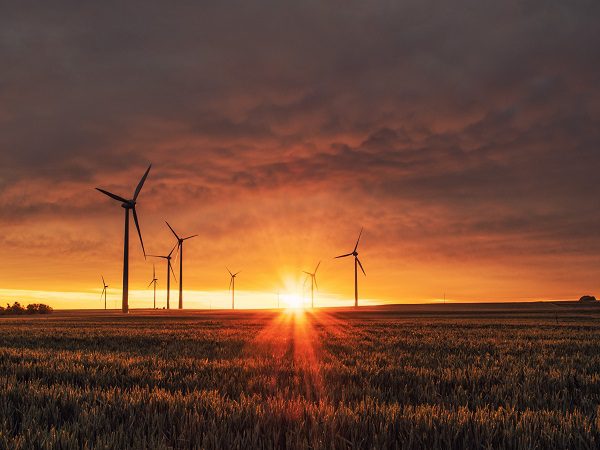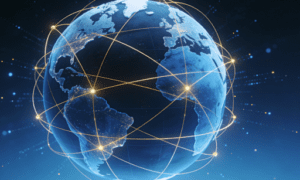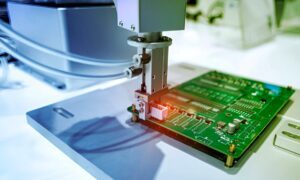Introduction
In the realm of environmental conservation, the integration of Internet of Things (IoT) technology has emerged as a game-changer. The use of IoT in environmental monitoring is transforming the way we understand, analyze, and respond to changes in climate and biodiversity. This article delves into the pivotal role that IoT plays in enhancing climate and nature conservation efforts, shedding light on its applications, benefits, and the profound impact it has on sustainable practices.
Understanding IoT in Environmental Monitoring
The Internet of Things refers to the interconnected network of devices that communicate and share data seamlessly. In the context of environmental monitoring, IoT devices are strategically deployed to collect, transmit, and analyze data related to the natural world. These devices, equipped with sensors, gather information on temperature, humidity, air quality, and other environmental parameters. The real-time data generated by IoT devices empowers scientists, policymakers, and conservationists to make informed decisions for the preservation of our planet.
Applications of IoT in Environmental Monitoring
Air Quality Monitoring:
IoT sensors are instrumental in monitoring air quality, detecting pollutants, and assessing the impact of human activities on the atmosphere. By tracking particulate matter and gas levels, these devices enable early intervention and the implementation of measures to mitigate air pollution.
Water Quality Management:
The health of aquatic ecosystems is crucial for biodiversity. IoT devices, when deployed in water bodies, continuously monitor parameters such as pH, dissolved oxygen, and pollutants. This information aids in the timely identification of water pollution sources and supports conservation efforts to protect marine life.
Climate Change Tracking:
IoT plays a vital role in tracking climate change patterns by collecting and analyzing data on temperature, rainfall, and sea level. This information contributes to a better understanding of climate trends, facilitating the development of effective strategies for climate change adaptation and mitigation.
Wildlife Conservation:
The monitoring of wildlife habitats through IoT devices helps in tracking the movement and behavior of endangered species. Conservationists can use this data to identify and address threats, leading to more targeted and efficient conservation initiatives.
Benefits of IoT in Environmental Monitoring
Real-time Data Insights:
IoT devices provide real-time data, allowing for immediate responses to environmental changes. This timely information is invaluable for implementing preventive measures and minimizing the impact of adverse conditions.
Cost-Efficiency:
Traditional environmental monitoring methods often involve manual data collection, which can be labor-intensive and costly. IoT technology automates this process, reducing operational expenses and enabling long-term, continuous monitoring.
Enhanced Accuracy:
The precision of IoT sensors ensures high-quality, accurate data collection. This accuracy is crucial for making informed decisions regarding conservation strategies and resource allocation.
Early Warning Systems:
With IoT devices in place, early warning systems can be established to alert authorities and communities about impending environmental threats such as floods, wildfires, or extreme weather events. This proactive approach helps in minimizing damage and saving lives.
The Impact of IoT on Nature Conservation
The integration of IoT into environmental monitoring has ushered in a new era of nature conservation. By providing a comprehensive understanding of ecosystems and their dynamics, IoT technology enables conservationists to tailor interventions to the specific needs of each environment. This targeted approach maximizes the effectiveness of conservation efforts, ensuring that resources are utilized efficiently to preserve biodiversity and combat climate change.
Transitions in the Technological Landscape
As technology evolves, so does the landscape of environmental monitoring. The seamless integration of IoT into conservation practices represents a significant transition from traditional methods to cutting-edge, data-driven approaches. This shift not only enhances the scope and accuracy of monitoring but also fosters a more proactive and adaptive approach to environmental challenges.
Challenges and Future Outlook
Despite the numerous advantages of IoT in environmental monitoring, challenges such as data security, standardization, and device interoperability persist. Addressing these challenges is crucial for the sustained growth of IoT applications in conservation. Looking ahead, advancements in AI and machine learning will likely play a pivotal role in refining data analysis processes and extracting meaningful insights from the vast amounts of information collected by IoT devices.
Conclusion
IoT in environmental monitoring stands as a beacon of hope for climate and nature conservation efforts. The integration of IoT technology not only enhances the accuracy and efficiency of data collection but also empowers conservationists to make informed decisions in real-time. As we navigate the challenges of a changing climate and strive to protect the diverse ecosystems that inhabit our planet, the role of IoT in environmental monitoring becomes increasingly indispensable. Embracing this technology is not just a choice; it is a commitment to a sustainable and resilient future for generations to come.



































